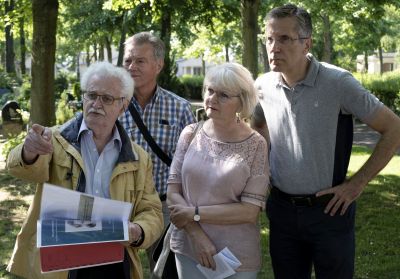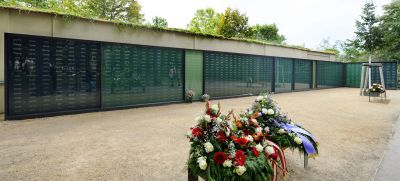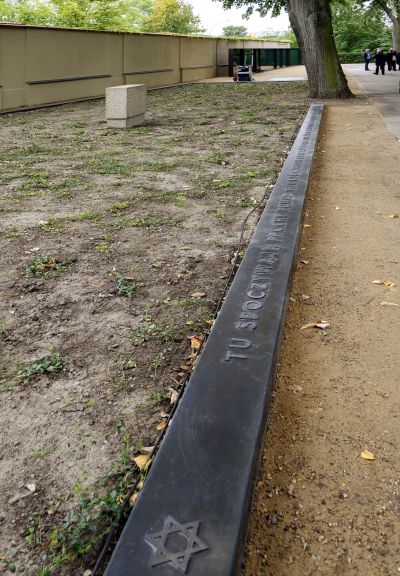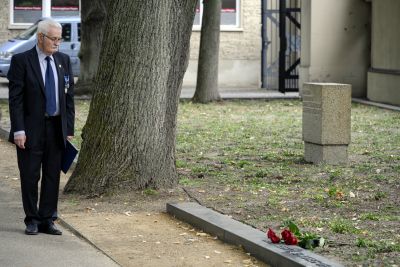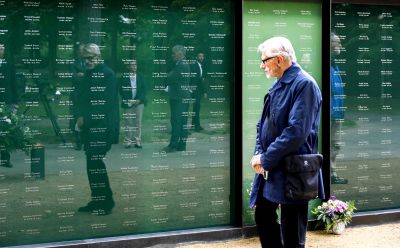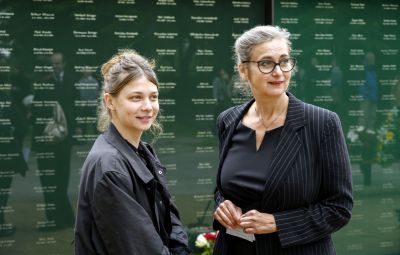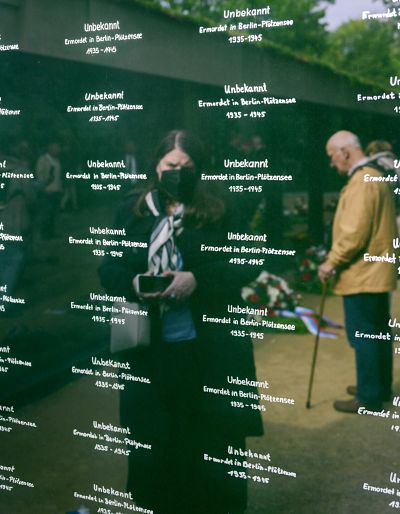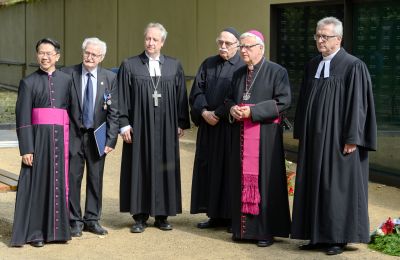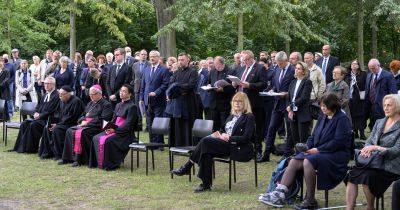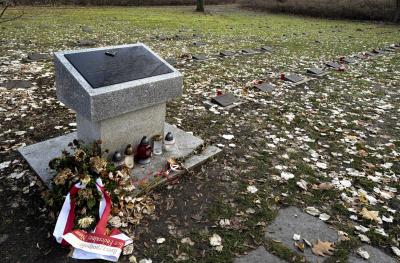REMEMBRANCE BEGINS COLLECTIVELY

When he welcomed the guests to the ceremony, Oliver Igel, District Mayor of Treptow-Köpenick, once again highlighted the role of Klaus Leutner and his efforts to rebuild the existing memorial site in the Altglienicke Cemetery. He said: “[He] was the one who did everything (...) to give those who died their identity back. (...) He was tireless (...) and achieved his goal!”
***
But before this humble, yet very moving ceremony could take place, we had to wait three years. Three difficult years, both for the organisers of the competition and for the creators of the memorial.
In all this, it was not just the pandemic that caused delays to the realisation of the project. Technological problems also needed to be solved; there were countless tenders for the glass panels, their frames and the reinforced concrete foundations, but they had to be selected to meet the artistic vision of the authors of the project and, at the same time, ensure that standards were met in terms of the safety of visitors to this place. On top of this, there were problems with the earthworks beyond the burial ground of the murdered victims. Urns from the 1950s were exposed which, for reasons of piety and to comply with statutory provisions, have now been moved to a place specially created for them.[2]
***
Archbishop Dr Heiner Koch opened the interfaith rite with the following words: “This newly created burial ground should be a place for us to remember them and their fate. Along with the 18 Polish priests who are buried here, this fate relates particularly to our Jewish sisters and brothers in faith. They all lived from their faith.”
The Chair of the General Rabbis’ Conference Germany, Prof. Nachama, called for all people to remember “those who died as madness ruled the world and evil lived in the world.” [Also remembered were those] “non-Jewish men and women who had the courage to stand outside the masses and suffer with us. May their sacrifice not have been for nought, may the world draw strength from their death in its daily battle against cruelty and prejudice, against tyranny and persecutions so that we can live together in peace and mutual respect.”
And Claudia Max from the Centre for Democracy, one of more than a thousand volunteer sponsors of the memorial site, stated: “I sponsored the name of one of the anonymous victims because I liked the idea very much that, through my handwriting, I can be a personal part of the memory and because I also personally appreciate the work carried out by Leutner and Struber and Gruber.”
***
For decades, the mortal remains of the nameless victims were at rest in a field along the cemetery wall and, in the style characteristic of the political poetry of East Germany, only a simple stone from the 1950s remembered the “anti-Fascists” buried there.
Today, a glass wall bearing the names of those who died forms the main element of the memorial site, which extends in an L shape from the end of the urn field at the cemetery wall to the south-west border of the necropolis, leaving behind a deep and unique impression.
Depending on the direction and the angle from which the sun’s rays hit the glass wall, so depending on the time of day or year, the names etched in the glass begin to shimmer, they become sharper or, quite the opposite, they meld with the reflections of the cemetery landscape.
[2] Site journal in images at: https://www.erinnerungsort-altglienicke.de/bautagebuch/
